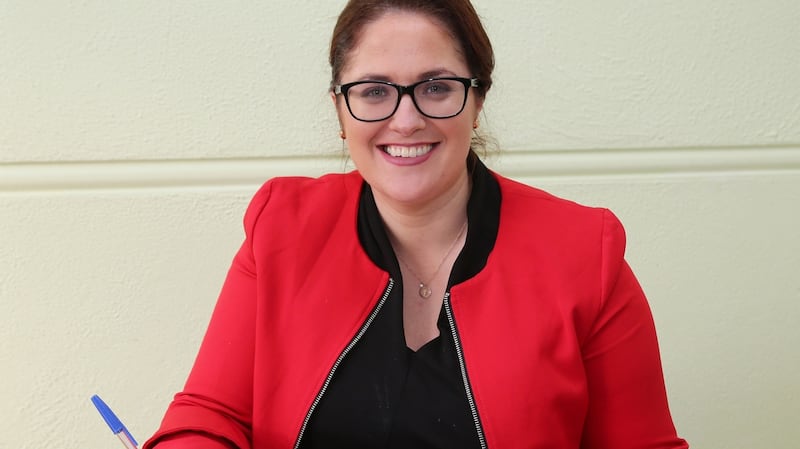When word came through earlier this month, says Louise Tobin, there was "excitement and amazement" in the school corridors.
St Joseph's Primary School – along with four other primary schools in Tipperary Town - had finally secured long-awaited resources under the Deis (Delivering Equality in Schools) programme.
“It was a battle, there’s no doubt about that, but we got the right result after six years of campaigning,” she said.

“In September we’ll at last have the extra resources to enable our pupils and all those in the town to access a good primary education with all the extra resources and supports needed to bridge the gaps . . . We’re looking forward to a brighter future for our young children.”
Over at Scoil Íosagáin Infant National School in Mallow, Co Cork, the reaction was very different.
"Honestly, I cried for about half an hour," principal Linda Dennehy said, after learning that her school had failed to secure Deis status.
“It was that upsetting for a school like ours. We put so much work into contacting TDs, having questions raised in the Dáil, and highlighting the needs of our children.”

She says it meant the school would not get access to training programmes for early literacy or numeracy programmes, or smaller class sizes. The needs are acute, she says, given that it has two special classes and enrols children from the local direct provision centre.
“It was a shock not to be on the list . . . Our needs are very real, but it seems some areas are more favoured than others.”
Reactions
These contrasting reactions were shared across many schools when the Minister for Education Norma Foley announced an expansion of the Deis programme earlier this month.
In all, some 310 schools’ students will benefit from additional supports – such as additional teaching posts, free schoolbooks and home supports for students – under the programmes.
The €32 million expansion of the scheme means almost 1,200 schools attended by one in four students will have Deis status from September 2022.
"This is the single biggest investment in educational disadvantage in the history of the State," said Ms Foley, at the announcement.
“Equality of opportunity in education must be a primary objective. Since becoming Minister, I have been very keen to ensure to the absolute maximum that we make available to our students that very opportunity.”
The Department of Education says schools were identified through a deprivation index based on the census which captures a greater breadth and severity of disadvantage.
However, the announcement has also sparked a wider debate about the Deis programme itself.
While the 16 year old programme has been subject of a number of evaluations, some critics argue that no fundamental review and restructuring of the scheme has yet taken place. They argue that urgent questions need to be addressed.
Is the Deis programme fit for purpose? Does it ensure all schools who need support get it? Is the attainment gap being narrowed sufficiently? And should the lingering effects of the pandemic prompt a rethink of how we tackle social inequality in education?
Gap
Latest available evidence suggests that Deis has been delivering results. Studies by the Educational Research Centre (ERC) show that while students in Deis schools had lower average scores in reading, maths and science compared with non-Deis schools in 2018, the gap has narrowed in key areas such as reading (See panel). Ms Foley said recently that the impact of the programme has attracted international attention from jurisdictions such as France, who have been impressed by the results and the targeted nature of the scheme.
However, Prof Judith Harford and Dr Brian Fleming of UCD's School of Education argue that while the evidence suggests progress has been made, it has been limited.
“Our research indicates that the Deis scheme is grossly under-funded relative to the challenges faced by school communities in endeavouring to meet the needs of their students,” they say.
“The scheme is also poorly structured in that it fails to address the particular organisational needs of schools in the scheme in any meaningful way.”
The notion that all post-primary schools serving disadvantaged areas are the same has always been absurd
Prof Selina McCoy and postdoctoral research fellow Eamonn Carroll of the ESRI also argue that key metrics – such as the gap in school completion rates between Deis and non-Deis school – have remained stubbornly persistent and, in fact, increased in recent years.
They point to a recent ERC analysis which compared home and school learning environments, wellbeing, attitudes, and aspirations of 15-year-olds in schools.
Students in schools in areas of socio-economic disadvantage were more likely to lose out on learning because of using alcohol and drugs, missing school without authorisation, and not being attentive in class.
They also had fewer educational resources in their homes and were less likely to aspire to go to higher education.
Identified
A key argument is whether schools that really need support are being identified.
The late researcher Trutz Haase, who helped devise the deprivation index which is used to identify schools in more deprived areas, argued that a sliding scale of support for schools was the best way to respond to educational need rather than a simple “in-out” scheme.
Harford and Fleming also point out that, for primary schools in the programme, Deis operates at three levels or bands reflecting the scale of disadvantage evident in a school. No such system exists in Deis schools at post-primary level.
“The notion that all post-primary schools serving disadvantaged areas are the same has always been absurd. The recent announcement doesn’t make clear whether this approach is being reformed or not. If the latter, it is extremely disappointing, given that the more detailed figures now available would facilitate such a move,” they say.
Complex
Educational disadvantage, however, is complex and intractable. Most agree that the Deis scheme cannot do the heavy-lifting on its own.
McCoy and Carroll say that the difficulties of the Covid-19 period have highlighted the gap in students’ home learning environments which were more likely than the school learning environment to reproduce social inequalities.
While almost all students will suffer some delay or loss of learning as a result of the pandemic, they say the level and impact of this delay or loss will generally be higher among those experiencing difficulties.
As well as greater challenges in comprehending material without properly differentiated instruction, the lack of the non-academic features of the classroom has impacted more on those struggling with academic material.
Deis schools, in particular, are on the front line in dealing with students’ issues in physical and mental health, housing, and poverty, but these issues cannot be solved by teachers or school leaders.
McCoy and Carroll says that what happens in the classroom is unlikely to overcome what happens outside it when a child is waiting months or years for access to therapeutic supports, access to child and adolescent mental health services or suitable accommodation.
“As a society, we must ask ourselves whether this is the level of funding we are willing to commit to tackling educational disadvantage in schools and, by extension, whether this is the level of inequality we are willing to tolerate,” McCoy and Carroll wrote, in a recent article for Education Matters Yearbook.
“As we return to ‘business as usual’, it is vital that we repair the damage done by two years of unprecedented disruption. Yet we cannot simply accept the restoration of pre-pandemic levels of inequality either. Educational inequality is a systemic phenomenon and must be addressed structurally and not just in the classroom, be it physical or virtual.”

Is the gap closing? Deis versus the rest
The Educational Research Centre has produced a series of reports over recent years examining the performance of Deis versus non-Deis schools. These are some of the findings:
- Compared with students in non-Deis schools, students in Deis schools had lower average scores in reading, maths and science in 2018.
- The gap in average reading achievement between Deis and non-Deis schools has reduced between 2009 and 2018, down from 70 points to 50 points
- There has been a significant reduction in the percentage of students in Deis schools at the lowest levels of maths achievement. In 2012, 37 per cent of students in Deis schools were low achievers. By 2018, this had reduced to 28 per cent.
- In 2018, 22 per cent of students in Deis schools had "very basic reading skills" compared with 9 per cent in non-Deis, and 23 per cent of students on average across the OECD.


















